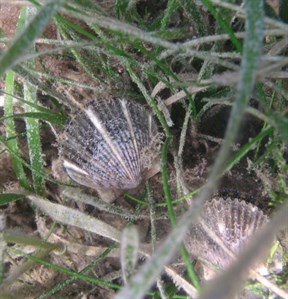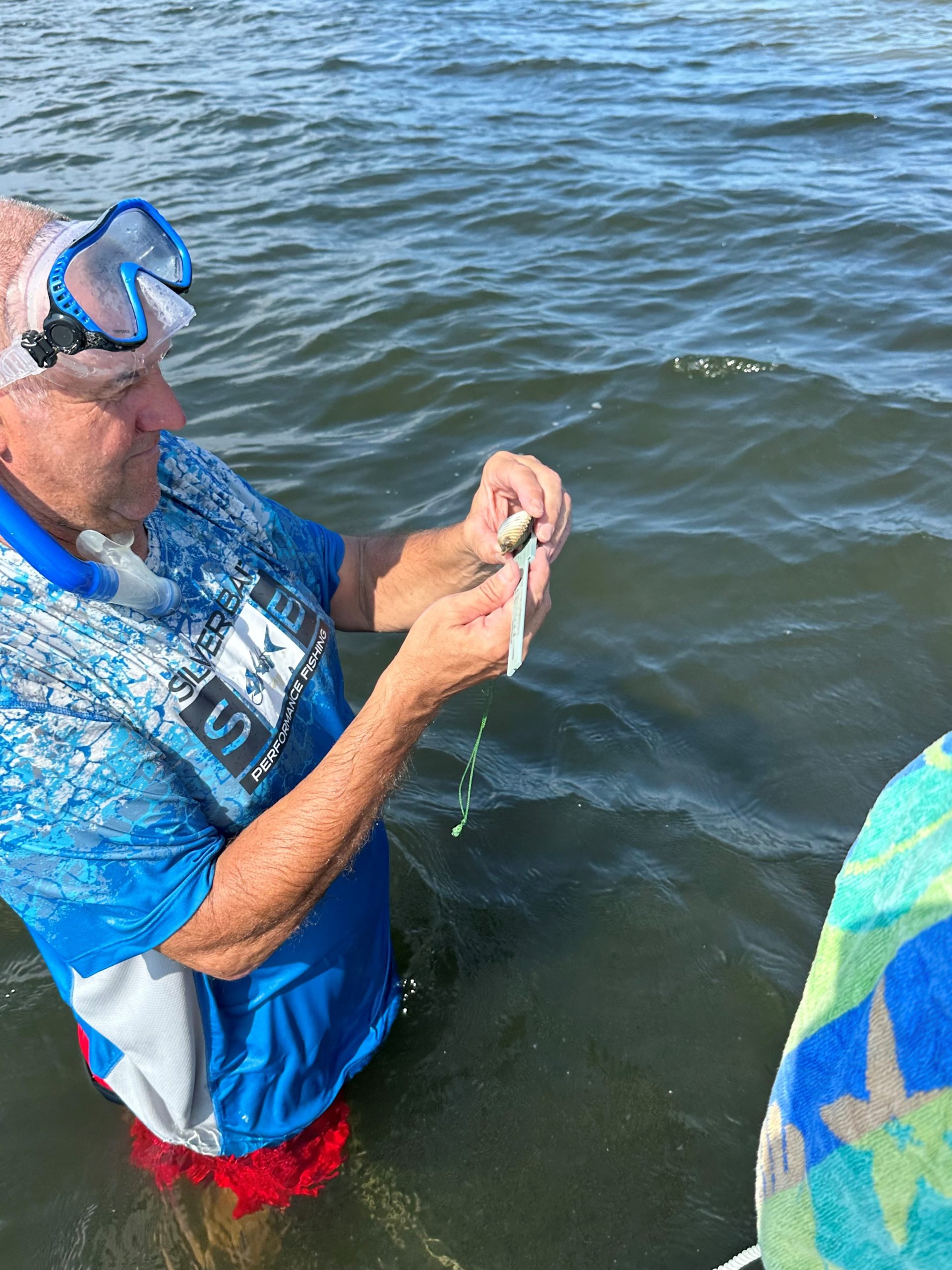I remember scalloping when I was young. We traveled to Port St. Joe Florida and camped at a local fish camp. We pitched our tent right at the edge of the water, which was a mistake because we felt the bumps and movements of the fiddler crabs beneath our sleeping bags all night. Soon after sunrise and breakfast we slipped on our mask and began a day of bivalve harvesting. The water was so shallow it seemed you could stand up even if you were a quarter of a mile from shore. The bay was full of green turtle grass and a myriad of marine creatures. Octopus, horse conchs, sea urchins, and even eels could easily be found as we zig-zagged across the seagrass beds looking for the little blue eyes of the scallops. At the end of the day, with a bucket full, we would clean and broil them in butter right there at camp enjoying an amazing sunset.
Wouldn’t it be cool to be able to do that here in Pensacola?
Did you know there was a time you could?
Bay scallops once ranged from Pensacola to Miami. At that time our bays had a lot more seagrass which supported the diverse estuarine creatures we see in St. Joe today. At that time there were enough scallops to support a commercial fishery. By the mid-1960s they could no longer be found here, or in much of their range. Today their remaining strong hold is the Big Bend area of Florida.

Photo: Florida Fish and Wildlife Conservation Commission
There are several explanations as to what happened. Declining water quality, loss of habitat, and overharvesting are at the top of the list. It was more likely a combination of things. Either way they disappeared from Big Lagoon and Santa Rosa Sound. Occasionally snorkelers would find small pockets of them, but the numbers had declined to a point where recreational harvesting was closed. There were a few attempts to try and restore them by translocating the bivalves from the Big Bend to our area. But they were not successful. One problem were locals harvesting them before they could establish themselves.
One plan to kick start scallops again was to mitigate the problems that caused the initial die-off, improving water quality and restoring seagrass. The local community began making several changes in the late 1970s and 1980s to improve water quality. Most attempts to restore seagrass across the state have not been successful. But some communities found if you reduce the stressors that initially caused the seagrass die-off, it will restore on its own. Improving water quality was one step. New methods for dealing with stormwater improved water clarity and reduced direct input of nutrients. Monitoring of our grassbeds has shown improvement in the last decade, they are trying to come back. But we still have problems like boat prop scars, high wave energy from boat wakes and seawalls, and increased stormwater to deal with.
In 2016 Florida Sea Grant began the Great Scallop Search. The objective was to see whether the scallops were responding to the improvements in seagrass coverage. Each year we would train about 100 volunteers to survey grids in Big Lagoon and Santa Rosa Sound. Year after year the numbers were zero. They did find scallop shells, but not live animals. Anecdotal reports outside of the official survey indicated that live scallops were still around. Last year our volunteers found four live scallops – two in Big Lagoon and two in Santa Rosa Sound. This year, prior to the official search, we have had photo verifications of about 60 live scallops. Could they be returning? We will see what the official survey finds.
It is important to state here that harvesting of scallops in the Pensacola Bay system is still illegal, our waters are still closed. It is also important for everyone to know that scallops only live one year and to have a successful recruiting year they need high density populations in the grassbeds. So, removing them will stall any effort by the bivalves to restore themselves. Let us know if you find them, but please leave them in the bay.

Photo: Gina Hertz.
The 2024 Scallop Search runs from July 14 through August 3. We survey Santa Rosa Sound at the beginning of the week and Big Lagoon at the end. If you have a team of three and would like to volunteer contact me at roc1@ufl.edu.
Let’s see if they will return.
 3
3
